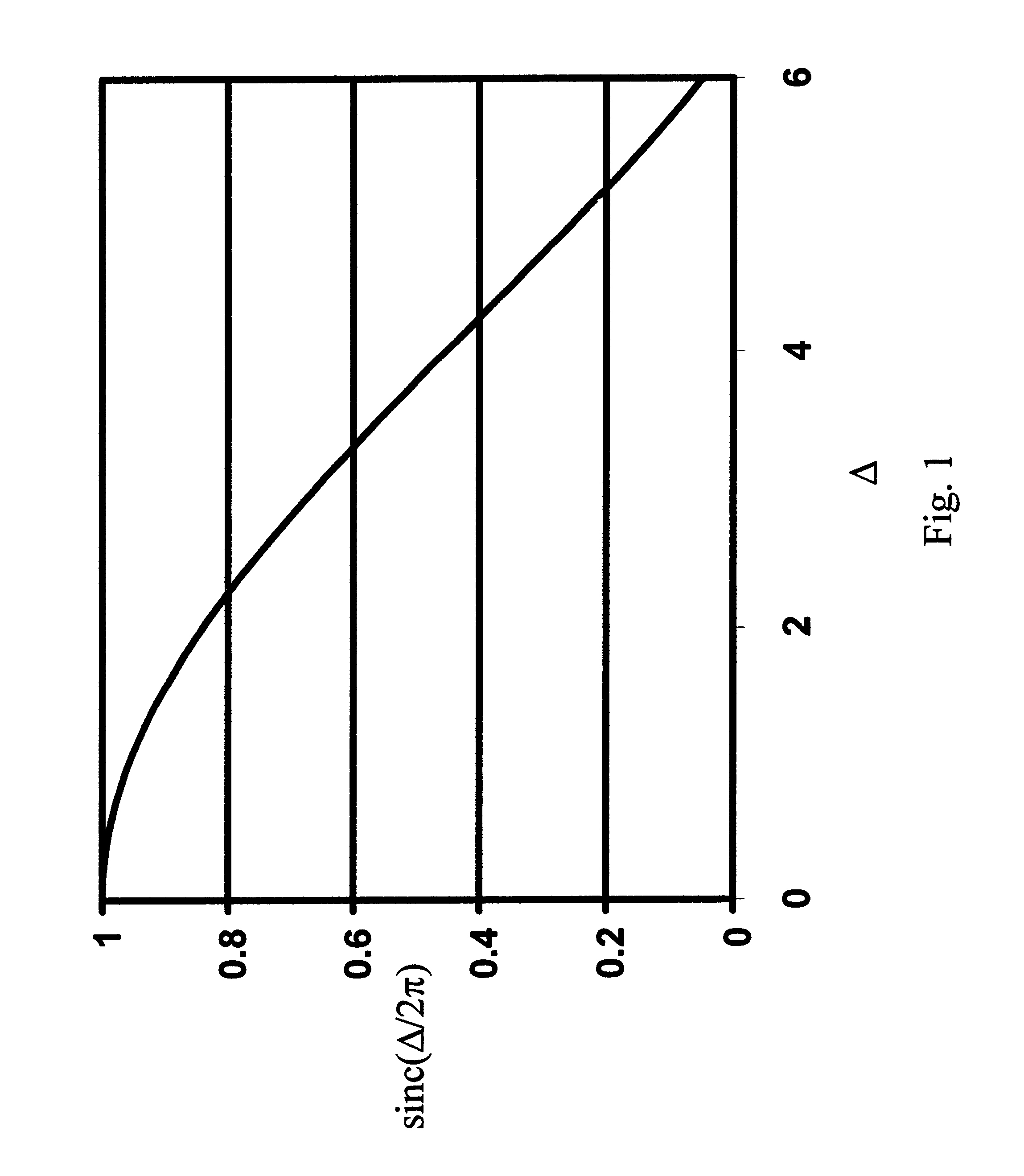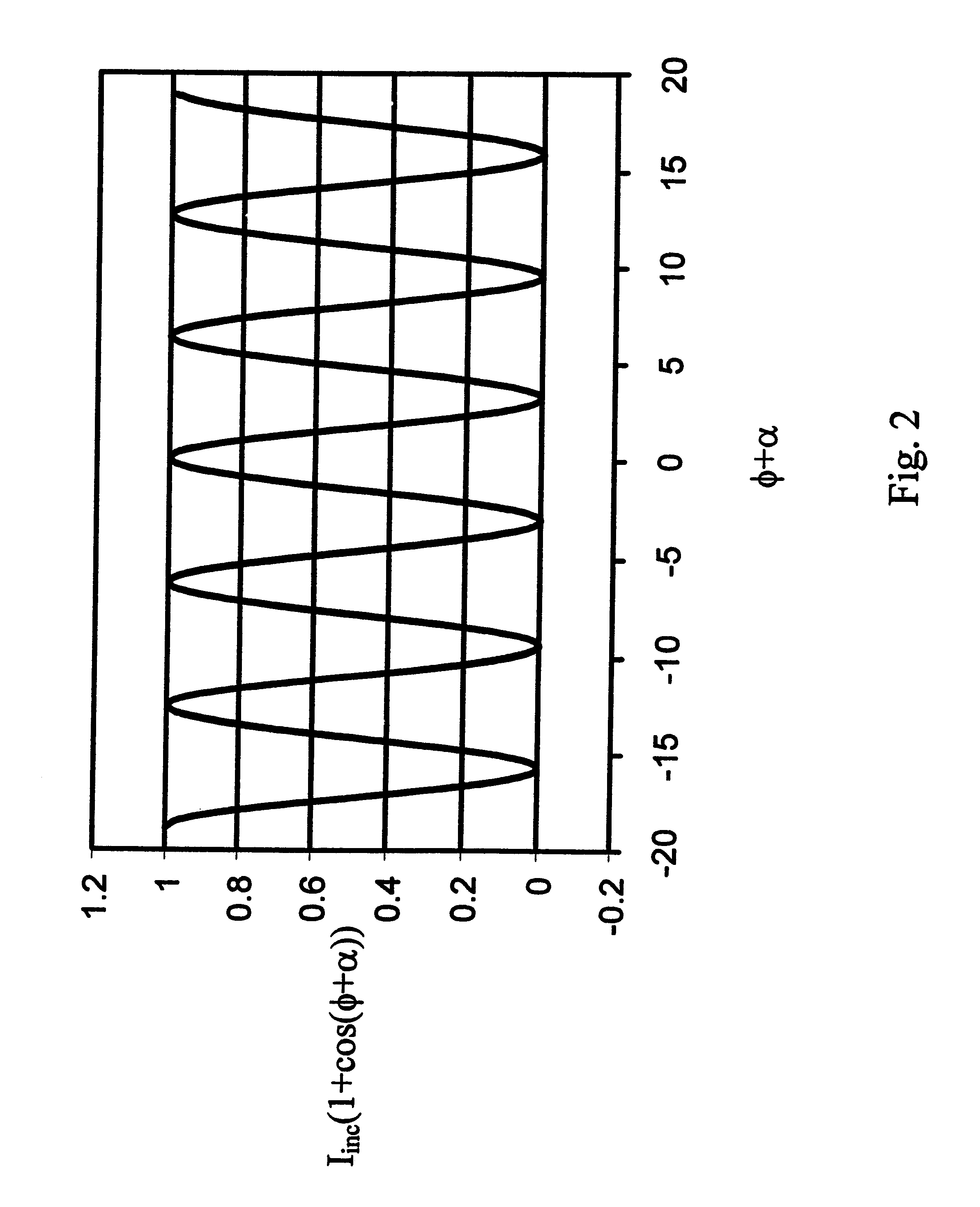Pulsed source scanning interferometer
a scanning interferometer and pulse source technology, applied in the field of scanning interferometers, can solve the problems of mechanical undesirable shift-and-hold motion of the stepping method, slowing down the data acquisition process, and no longer being generally preferred in the industry, and achieve the effect of improving signal utilization
- Summary
- Abstract
- Description
- Claims
- Application Information
AI Technical Summary
Benefits of technology
Problems solved by technology
Method used
Image
Examples
Embodiment Construction
The present invention consists of a single inventive concept, the realization that the signal loss resulting from the finite integration time of light detectors can be minimized by utilizing a pulsed light source of sufficient intensity to produce a significantly detectable signal on the detector's surface. By using a sufficiently short pulse length and synchronizing the source and the integration time of the detector, an effectively instantaneous integration time can be achieved, during which a negligible phase shift occurs and a correspondingly negligible loss of signal is experienced. As used herein, "synchrony" between the pulsed emission of radiation and the detector's integration time is intended to mean a condition whereby at least a portion of the pulsed wavefront is received by the detector while it is integrating the incident signal. Such condition is also referred to as one of "contemporaneous" light-intensity measurement of the pulsed signals.
Referring to the drawings, w...
PUM
 Login to View More
Login to View More Abstract
Description
Claims
Application Information
 Login to View More
Login to View More - R&D
- Intellectual Property
- Life Sciences
- Materials
- Tech Scout
- Unparalleled Data Quality
- Higher Quality Content
- 60% Fewer Hallucinations
Browse by: Latest US Patents, China's latest patents, Technical Efficacy Thesaurus, Application Domain, Technology Topic, Popular Technical Reports.
© 2025 PatSnap. All rights reserved.Legal|Privacy policy|Modern Slavery Act Transparency Statement|Sitemap|About US| Contact US: help@patsnap.com



